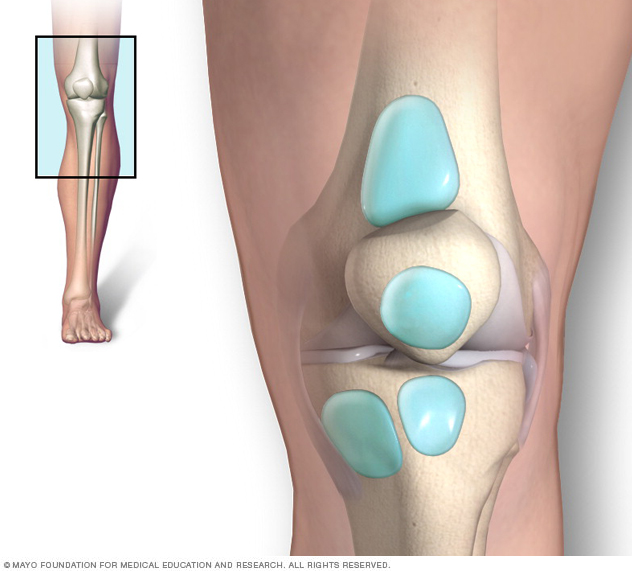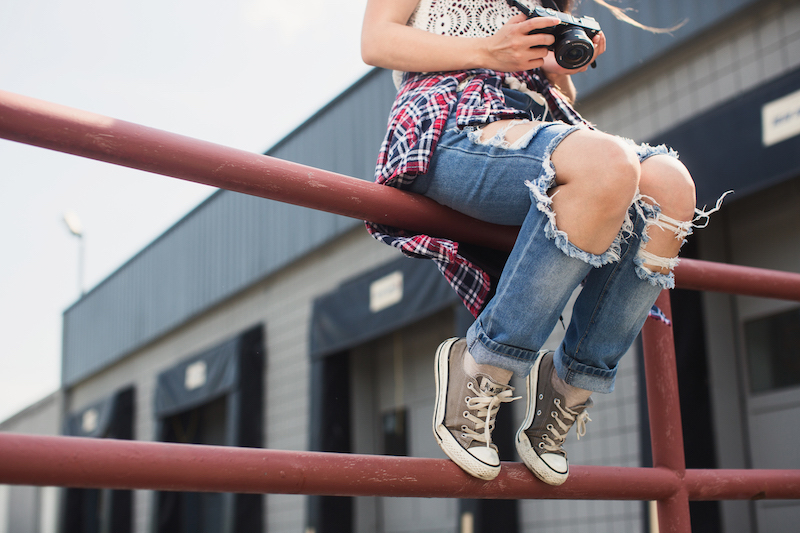All You Need To Know About Knee Bursitis
Knee pain can be the cause of much concern and confusion, especially if you have no idea what’s going on! To help give you a better understanding of pain and swelling in the knee, let’s explain a common condition affecting the area called: knee bursitis.
So what is bursitis exactly? Often, any swelling of the knee joint is called ‘water on the knee.’ However, there is a difference between fluid accumulation within a bursa specifically, and within the knee joint as a whole.

A bursa is a thin sac of synovial fluid (the body’s natural lubrication fluid) that is found between muscles, tendons, and skin, and allows these tissues to slide over one another without causing friction. These bursa are found throughout the body, particularly at interfaces where a lot is going on (think shoulders, hips, knees).
Unfortunately, bursa can sometimes become inflamed and irritated – a condition known as bursitis. As opposed to generalized knee joint swelling, there is a more localized swelling and tenderness with pressure applied in bursitis. Furthermore, as there are up to eleven bursa around the knee, depending on which one is inflamed the location and feeling of pain can vary.
Bursitis in the knee occurs mostly from overuse injuries and is less frequent due to trauma. The mechanism of injury influences which bursa is affected, with the most common ones being the: pre-patellar, infrapatellar, suprapatellar and pes anserinus bursa (anatomy fun fact: the ‘patella’ is the kneecap).

Prepatellar bursitis is common in those who kneel a lot (think gardener, roofer, carpet layer), and results in superficial swelling on the front of the knee.
Infrapatellar Bursitis often occurs in conjunction with ‘jumper’s knee’ (you guessed it, in jumping activities) from repetitive strain and irritation to the tendon just below the patella. This form can cause anterior knee pain that mimics a patellar tendinopathy and can be harder to treat.
Suprapatellar bursitis causes pain above the patella, under the quadriceps tendon; it is seen following an injury such as a fall to the knee or repetitive microtrauma – think running on soft/uneven surfaces or jobs that require crawling.

The pes anserinus bursa at the lower inside of the knee is more commonly irritated in middle-aged women and overweight people. Regardless of location, bursitis often results in a knee that is painful to move, has a limited range of motion, and may be swollen/red/warm around the affected area. Symptoms are often worsened with kneeling, crouching or repetitive bending/squatting, and relieved when sitting still and resting.

To summarize, bursitis in the knee can be caused by direct trauma, biomechanical changes, frequent falls, repeated pressure or repetitive microtrauma to the knee.
Treatment for mild cases of knee bursitis involves rest and lifestyle management strategies such as weight loss, protection for your knees during work, and changing positions of movement to vary the load from just being on your knee. The use of non-steroidal anti-inflammatory drugs may further assist in decreasing inflammation. Severe cases might require aspiration (removal of fluid via a needle/syringe), the use of a corticosteroid and local anesthetic with appropriate treatment of the surrounding tissue if necessary, as advised a professional.
As you can imagine, by not treating knee bursitis as soon as possible, this will lead to further irritation. With that, to prevent bursitis of the knee from re-occurring, the cause of inflammation must be found. This involves determining if it is a muscle tightness, leg length discrepancy, training error, or something else that is aggravating the bursa. This might require assessment by a professional to determine the best plan of action to prevent this annoying pain from coming back!





